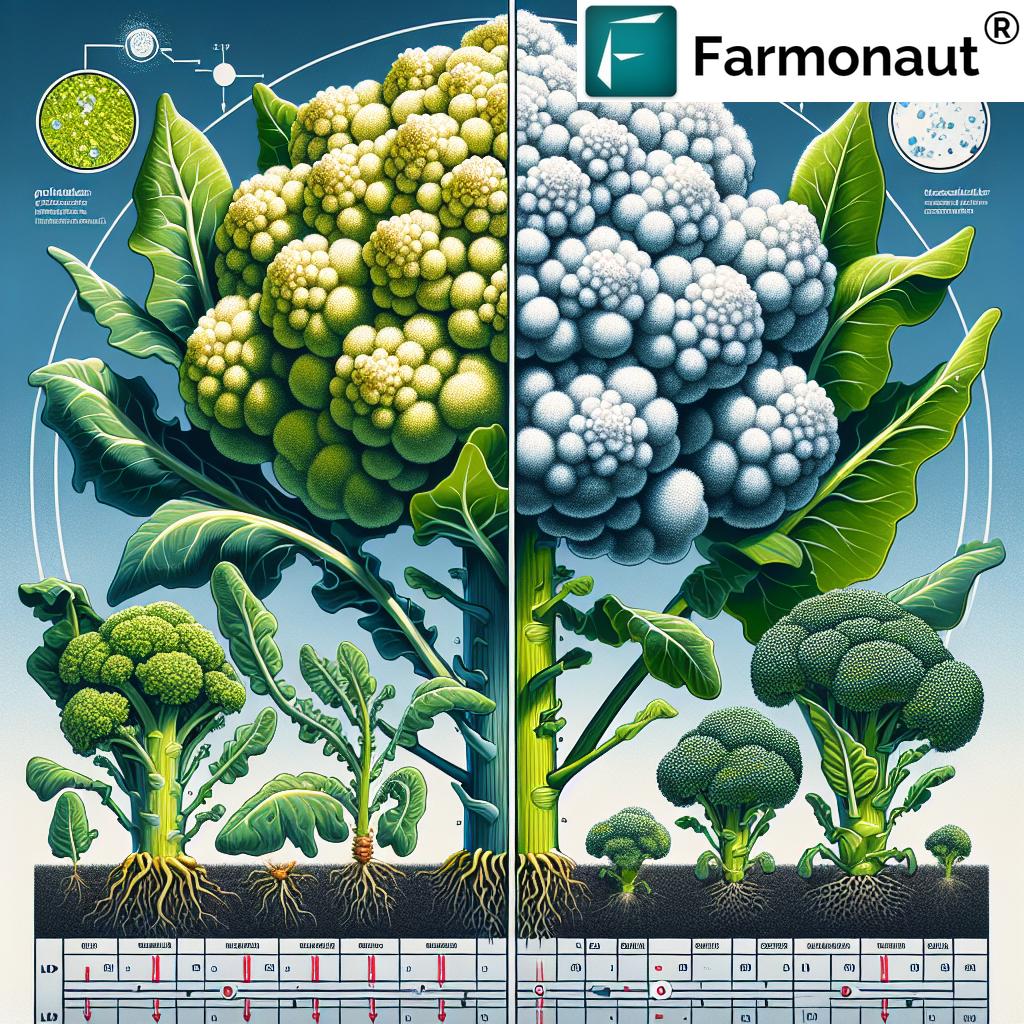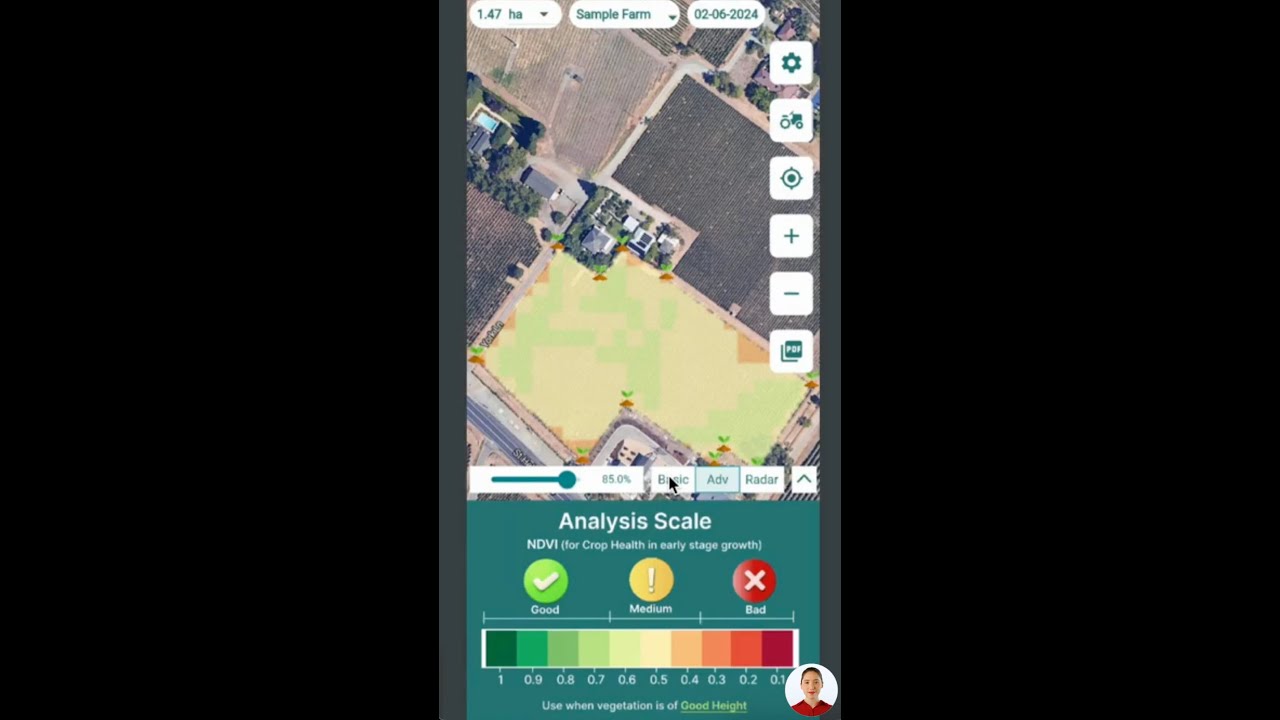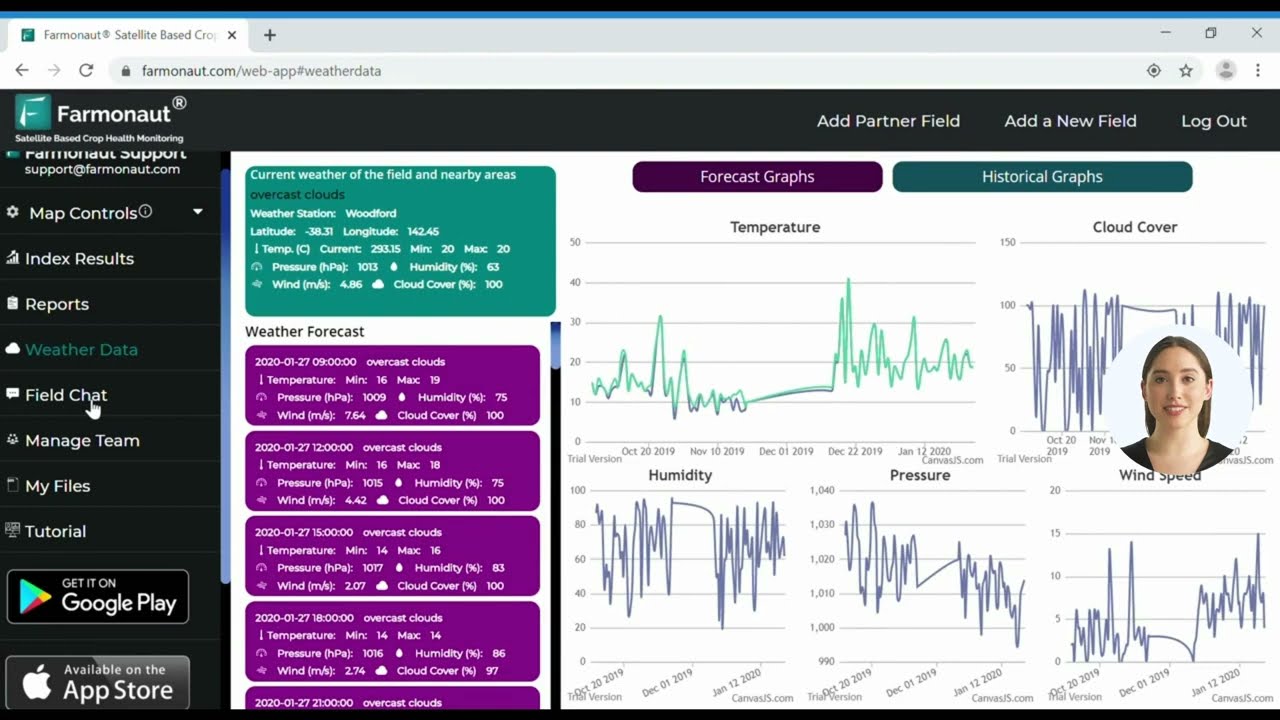Mastering Downy Mildew Control in Australian Brassicas: Farmonaut’s Expert Guide to Fungicide Resistance Management

“Downy mildew can reduce brassica crop yields by up to 100% if left uncontrolled, highlighting the importance of effective management.”
In the vast agricultural landscapes of Australia, brassica crops like broccoli and cauliflower play a crucial role in both domestic consumption and export markets. However, these valuable crops face a formidable enemy: downy mildew. This devastating disease has the potential to wreak havoc on brassica plantations, significantly impacting crop yields and farmer livelihoods. At Farmonaut, we understand the challenges Australian farmers face in managing this persistent threat. That’s why we’ve compiled this comprehensive guide to mastering downy mildew control in Australian brassicas, with a focus on effective fungicide resistance management strategies.
As climate change continues to alter weather patterns and create more favorable conditions for disease development, it’s crucial for farmers to adopt climate-resilient farming techniques and implement robust crop protection strategies. In this blog post, we’ll explore sustainable agriculture practices, integrated pest management for vegetables, and the latest advancements in biotechnology that can help combat downy mildew in broccoli and cauliflower.
Understanding Downy Mildew in Brassicas
Before we delve into control strategies, it’s essential to understand the nature of downy mildew and its impact on brassica crops:
- Causal Agent: Downy mildew in brassicas is caused by the oomycete pathogen Hyaloperonospora brassicae (formerly Peronospora parasitica).
- Symptoms: The disease manifests as yellow patches on the upper leaf surface, with a corresponding gray-white, fuzzy growth on the underside of leaves.
- Favorable Conditions: Cool, humid weather with temperatures between 10-20°C (50-68°F) and high relative humidity (>85%) favor disease development.
- Crop Impact: Severe infections can lead to stunted growth, reduced yield, and even plant death in extreme cases.
Given the potential for significant crop losses, implementing effective downy mildew control measures is paramount for Australian brassica farmers. Let’s explore the key strategies for managing this disease, with a particular focus on fungicide resistance management.
Fungicide Resistance Management: A Cornerstone of Downy Mildew Control
Fungicide resistance management is crucial for maintaining the long-term efficacy of chemical control options against downy mildew. As pathogens can develop resistance to fungicides over time, it’s essential to implement strategies that minimize this risk:
- Rotate Fungicide Groups: Alternating between fungicides with different modes of action helps prevent the development of resistant pathogen populations.
- Limit Applications: Adhere to label recommendations for the maximum number of applications per season to reduce selection pressure on the pathogen.
- Use Mixtures and Co-formulations: Combining fungicides with different modes of action can provide broader protection and reduce the risk of resistance development.
- Integrate Non-Chemical Controls: Incorporate cultural and biological control methods to reduce reliance on fungicides alone.
To help farmers implement these strategies effectively, we’ve compiled a comprehensive table of fungicide options for downy mildew control in brassicas:
| Fungicide Group | Active Ingredients | Mode of Action | Resistance Risk | Application Frequency | Rotation Recommendations |
|---|---|---|---|---|---|
| Group 4 | Mefenoxam | RNA polymerase I inhibitor | High | Max 2 applications per season | Rotate with at least 2 other modes of action |
| Group 11 | Azoxystrobin | Quinone outside inhibitor (QoI) | High | Max 3 applications per season | Alternate with non-Group 11 fungicides |
| Group 21 | Cyazofamid | Quinone inside inhibitor (QiI) | Medium to High | Max 4 applications per season | Rotate with different mode of action groups |
| Group 40 | Dimethomorph | Cellulose synthase inhibitor | Low to Medium | Max 4 applications per season | Use in mixture with multi-site fungicides |
“Rotating between at least 3 different fungicide groups is recommended to effectively manage downy mildew resistance in brassicas.”
Integrated Pest Management for Downy Mildew Control
While fungicides play a crucial role in downy mildew management, an integrated pest management (IPM) approach is essential for sustainable and effective control. Here are key components of an IPM strategy for downy mildew in brassicas:
- Cultural Controls:
- Crop Rotation: Implement a 3-4 year rotation with non-brassica crops to reduce inoculum levels in the soil.
- Plant Spacing: Ensure adequate spacing between plants to improve air circulation and reduce humidity within the canopy.
- Irrigation Management: Use drip irrigation or water early in the day to minimize leaf wetness periods.
- Resistant Varieties: Choose brassica varieties with known resistance or tolerance to downy mildew when available.
- Monitoring and Forecasting: Regularly scout crops for early signs of disease and utilize disease forecasting models to time fungicide applications effectively.
- Biological Controls: Incorporate beneficial microorganisms that can suppress pathogen growth or induce plant resistance.
By integrating these practices with a well-planned fungicide program, farmers can achieve more sustainable and effective downy mildew control in their brassica crops.
Leveraging Technology for Enhanced Crop Protection
At Farmonaut, we believe that technology plays a crucial role in modern agriculture, especially when it comes to crop protection and disease management. Our satellite-based crop monitoring system can provide valuable insights to support downy mildew control efforts:
- Early Detection: Our advanced algorithms can detect subtle changes in crop health, potentially identifying downy mildew infections before they become visible to the naked eye.
- Targeted Applications: By identifying areas of potential disease pressure, farmers can apply fungicides more precisely, reducing overall chemical usage and improving efficacy.
- Climate Monitoring: Our platform provides real-time weather data and forecasts, helping farmers anticipate conditions favorable for downy mildew development and time their control measures accordingly.
To learn more about how Farmonaut’s technology can support your crop protection efforts, check out our video tutorial on interpreting satellite data for agriculture:
By combining traditional agricultural knowledge with cutting-edge technology, we can empower farmers to make more informed decisions and implement more effective downy mildew control strategies.
Sustainable Agriculture Practices for Long-Term Disease Management
As we strive for more sustainable agriculture practices, it’s crucial to consider long-term strategies for managing downy mildew and other plant diseases. Here are some key approaches that align with sustainable farming principles:
- Soil Health Management: Maintaining healthy, well-balanced soils can improve plant resilience to diseases. Practices such as cover cropping, crop rotation, and minimal tillage can enhance soil structure and beneficial microbial populations.
- Biodiversity: Increasing on-farm biodiversity through intercropping, hedgerows, or beetle banks can help support natural enemy populations that may contribute to disease suppression.
- Nutrient Management: Balanced fertilization, particularly avoiding excessive nitrogen applications, can reduce plant susceptibility to downy mildew and other diseases.
- Water Conservation: Implementing efficient irrigation systems and practices not only conserves water but can also help create less favorable conditions for downy mildew development.
These sustainable practices not only contribute to better disease management but also help build more resilient farming systems that can better withstand the challenges posed by climate change and evolving pest pressures.
Climate-Resilient Farming Techniques for Brassica Production
As climate change continues to impact agricultural production worldwide, it’s essential for Australian brassica farmers to adopt climate-resilient farming techniques. These strategies can help mitigate the increased disease pressure that may result from changing weather patterns:
- Adaptive Planting Schedules: Adjust planting dates to avoid peak periods of disease pressure or extreme weather events.
- Diversification: Grow a variety of brassica crops or cultivars with different disease resistance profiles to spread risk.
- Protected Cultivation: Consider using polytunnels or other protected growing systems to create more controlled environments for high-value brassica crops.
- Water Management Infrastructure: Invest in improved drainage systems to manage excess water during heavy rainfall events, reducing conditions favorable for downy mildew development.
By implementing these climate-resilient techniques, farmers can better prepare their brassica crops to withstand the challenges posed by changing climate conditions and associated disease pressures.

The Role of Biotechnology in Downy Mildew Management
Advancements in biotechnology offer promising avenues for enhancing downy mildew control in brassicas. While genetic modification remains a contentious issue in many regions, other biotechnological approaches are gaining traction:
- Marker-Assisted Breeding: This technique allows breeders to develop new brassica varieties with improved downy mildew resistance more efficiently.
- RNA Interference (RNAi): This emerging technology has the potential to target specific genes in the downy mildew pathogen, potentially offering a highly specific control method.
- Microbiome Engineering: Research into beneficial plant-associated microorganisms could lead to new biological control agents or probiotic treatments for brassica crops.
While many of these technologies are still in development, they represent exciting possibilities for future downy mildew management strategies.
Optimizing Fungicide Applications for Maximum Efficacy
To achieve the best results from your fungicide program, it’s crucial to optimize application techniques. Here are some key considerations:
- Timing: Apply fungicides preventatively or at the first sign of disease. Use disease forecasting models and local extension recommendations to guide application timing.
- Coverage: Ensure thorough coverage of the plant, especially the undersides of leaves where downy mildew spores typically develop.
- Spray Technology: Use appropriate nozzles and spray pressures to achieve optimal droplet size and distribution.
- Tank Mixing: When using fungicide mixtures, ensure compatibility and follow label instructions for mixing order and rates.
- Adjuvants: Consider using appropriate adjuvants to improve fungicide performance, especially for products that benefit from enhanced spreading or sticking properties.
By paying close attention to these application details, farmers can maximize the effectiveness of their fungicide treatments and improve overall downy mildew control.
Leveraging Farmonaut’s Technology for Precision Agriculture
Farmonaut’s advanced satellite-based farm management solutions can significantly enhance your efforts in controlling downy mildew and managing fungicide resistance. Our platform offers several key features that support precision agriculture practices:
- Real-time Crop Health Monitoring: Our satellite imagery analysis provides up-to-date information on vegetation health, allowing for early detection of potential disease outbreaks.
- AI-based Advisory System: Our Jeevn AI system offers personalized recommendations for crop management, including optimal timing for fungicide applications based on local conditions.
- Weather Forecasting: Access accurate, localized weather forecasts to plan your disease control measures effectively.
- Resource Management Tools: Optimize your fungicide usage and other inputs with our comprehensive resource management features.
To see how our web app can revolutionize your crop monitoring efforts, watch this informative video:
By integrating Farmonaut’s technology into your farming operations, you can make more informed decisions, improve the timing and efficiency of your fungicide applications, and ultimately achieve better control of downy mildew in your brassica crops.
The Importance of Adherence to Product Labels and Guidelines
When it comes to fungicide application and resistance management, following product labels and official guidelines is paramount. Here’s why:
- Legal Compliance: Adhering to label instructions ensures that you’re using the product legally and responsibly.
- Efficacy: Application rates and timings specified on labels are based on extensive research to provide optimal disease control.
- Resistance Management: Following guidelines on application frequency and rotation helps prevent the development of fungicide-resistant pathogen populations.
- Safety: Label instructions include important safety information to protect applicators, consumers, and the environment.
- Maximum Residue Limits (MRLs): Adhering to pre-harvest intervals and application rates ensures that produce meets MRL requirements for both domestic and export markets.
Always consult the most up-to-date product labels and seek advice from local agricultural extension services for region-specific recommendations on downy mildew control in brassicas.
Monitoring and Evaluation: Key to Long-term Success
Implementing a robust monitoring and evaluation program is essential for the long-term success of your downy mildew management strategy. Here’s how you can effectively track and improve your control efforts:
- Regular Scouting: Conduct weekly field inspections to assess disease presence and severity.
- Record Keeping: Maintain detailed records of fungicide applications, weather conditions, and disease observations.
- Efficacy Assessment: Evaluate the performance of different fungicides and control strategies throughout the season.
- Resistance Monitoring: Participate in regional fungicide resistance monitoring programs if available.
- End-of-Season Review: Conduct a thorough analysis of your disease management program’s effectiveness at the end of each growing season.
By consistently monitoring and evaluating your downy mildew control efforts, you can identify areas for improvement and refine your management strategies over time.
Farmonaut’s Contribution to Sustainable Brassica Production
At Farmonaut, we’re committed to supporting Australian farmers in their efforts to produce high-quality brassica crops while minimizing environmental impact. Our technology contributes to sustainable agriculture in several ways:
- Precision Application: By providing detailed crop health maps, we enable farmers to target fungicide applications only where needed, reducing overall chemical usage.
- Resource Optimization: Our AI-driven insights help farmers make more efficient use of water, fertilizers, and other inputs, contributing to more sustainable farming practices.
- Data-Driven Decision Making: With access to real-time data and analytics, farmers can make more informed decisions about crop management, leading to improved yields and reduced waste.
To learn more about how Farmonaut can support your sustainable farming efforts, watch this overview of our satellite-based crop monitoring capabilities:
Conclusion: A Holistic Approach to Downy Mildew Management
Mastering downy mildew control in Australian brassicas requires a multifaceted approach that combines fungicide resistance management, integrated pest management strategies, and the latest technological advancements. By implementing the strategies outlined in this guide, farmers can significantly improve their ability to protect their broccoli and cauliflower crops from this devastating disease.
Remember, effective downy mildew control is not just about applying fungicides; it’s about creating a holistic crop management system that promotes plant health, minimizes disease pressure, and uses chemical controls judiciously. By embracing sustainable agriculture practices, leveraging precision farming technologies, and staying informed about the latest developments in plant protection, Australian brassica farmers can ensure the long-term viability and profitability of their operations.
At Farmonaut, we’re dedicated to supporting farmers in this journey towards more resilient and sustainable crop production. Our advanced satellite-based monitoring systems, AI-driven insights, and user-friendly platforms are designed to empower farmers with the information they need to make better decisions and achieve optimal crop yields.
To experience the benefits of Farmonaut’s technology firsthand, we invite you to explore our various offerings:
For those interested in integrating our satellite and weather data into their own systems, we also offer a robust API. Developers can find comprehensive documentation in our API Developer Docs.
By combining your agricultural expertise with Farmonaut’s cutting-edge technology, you can take your brassica production to new heights, effectively managing downy mildew and other challenges while promoting sustainable farming practices.
Farmonaut Subscription Options
Frequently Asked Questions
Q: How often should I rotate fungicides to prevent resistance development in downy mildew?
A: It’s recommended to rotate between at least three different fungicide groups with distinct modes of action throughout the growing season. Avoid using the same fungicide group more than twice consecutively.
Q: Can cultural practices alone control downy mildew in brassicas?
A: While cultural practices are essential for reducing disease pressure, they are typically not sufficient to control downy mildew alone in high-pressure situations. An integrated approach combining cultural practices with judicious use of fungicides is usually most effective.
Q: How can Farmonaut’s technology help me manage downy mildew in my brassica crops?
A: Farmonaut’s satellite-based crop monitoring can help detect early signs of crop stress, potentially indicating disease presence before visible symptoms appear. Our platform also provides localized weather forecasts and AI-driven recommendations to optimize the timing of fungicide applications and other management practices.
Q: Are there any organic options for controlling downy mildew in brassicas?
A: Yes, there are organic options available, including copper-based fungicides and biological control agents. However, these may have lower efficacy compared to conventional fungicides and often require more frequent applications. Integrating these with robust cultural practices is key for organic downy mildew management.
Q: How does climate change impact downy mildew management in brassicas?
A: Climate change can lead to more frequent extreme weather events and altered seasonal patterns, potentially creating more favorable conditions for downy mildew development. This makes it crucial to adopt climate-resilient farming techniques and utilize advanced monitoring tools like Farmonaut to stay ahead of changing disease pressures.




















